
Minimally Invasive Method of Implantation- MIMI® Insertion Protocol
Based on current evidence on bone physiology, the MIMI® insertion protocol is a minimally invasive dental implantation procedure without incisions and sutures. The dogma of “healing by resting” has been refuted. As a matter of fact, bone needs loading which increases bone mass, while inactivity or healing by resting causes bone mass loss. In addition, MIMI® differs from other insertion protocols in other aspects. We use CNIP-Navigation, this drilling protocol is performed at very low speed in the cortical and spongy bone which avoids bone wall perforation. CNIP Navigation is a drilling protocol in a sagittal/horizontal position that can be compared with an endodontic treatment involving a manual preparation of the root canal, avoiding canal perforation. Like a treatment of a less dense nerve canal, when performing an implant osteotomy the Conical Triangular Drills are guided through the cortical bone (dense buccal and oral exterior walls) and allow in depth preparation of the spongy bone.
Conical Triangular Drills
With MIMI® insertion protocol, the Conical Triangular Drills allow bone to be removed and also “laterally condensed”.
Champions-Implants recommends that you should drill at a maximum rotation speed of 250 rpm in the cortical bone and at 70 rpm maximum in the spongy bone.
MIMI® Is Not Blind Work.
Dr. Armin Nedjat, the developer of Champions® implants, was focusing on minimally invasive insertion protocols and developed the standardized MIMI® procedure. For the last 15 years, this method has not only proven its worth in Germany but also in other countries in Europe as well as the United States and Asia.
You can find frequently asked questions on MIMI below:
1. What is the difference between MIMI® and the conventional implantation method?
“MIMI”, the minimally invasive insertion protocol, is performed without raising a mucoperiosteal flap, without incisions, and without sutures. Drilling is performed with Conical Triangular Drills. Contrary to other insertion protocols, MIMI only requires 2 sessions instead of 5 or 6. Patients treated with MIMI® usually can resume their daily activities the next day without pain and swelling. When using MIMI® the periosteum is protected to the maximum during surgical as well as during prosthetic procedures. In 98% of the cases, surgery requires neither exposure of the implant nor a reopening of the gingiva. Immediately after implantation, you perform a “closed impression”, as you would do for any other dental impression. Besides saving surgery sessions and time, do not forget the benefits: The patient hardly feels any pain and in most cases the final denture is completed in just 8–10 weeks after implantation. If the implant is immediately loaded, the final denture is completed on the same day or a few days after implantation.
THE MIMI®-FLAPLESS ADVANTAGES AT A GLANCE:
- Minimally Invasive Method of Implantation (MIMI®-Flapless)
- No mucoperiosteal flap during surgery
- No implant exposure
- No subgingival impression for dentures

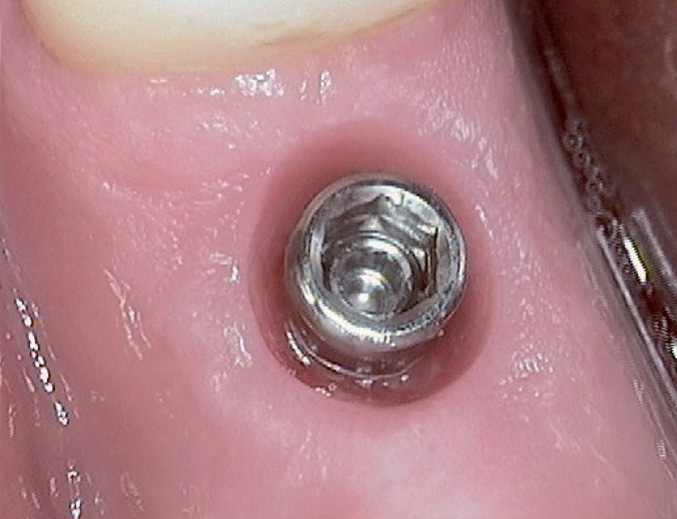
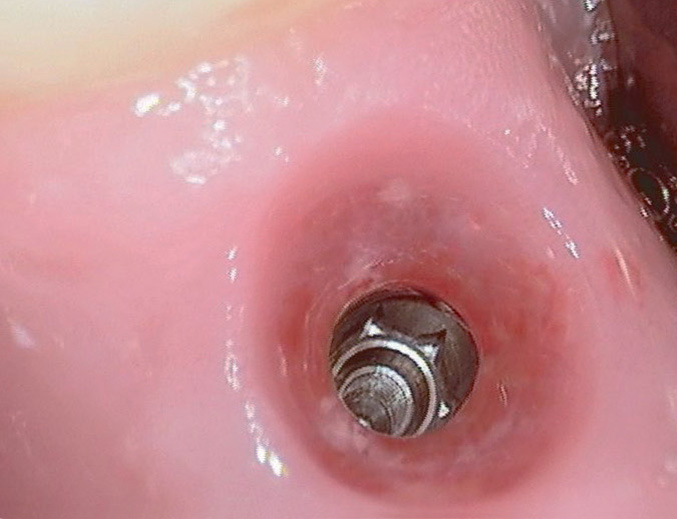

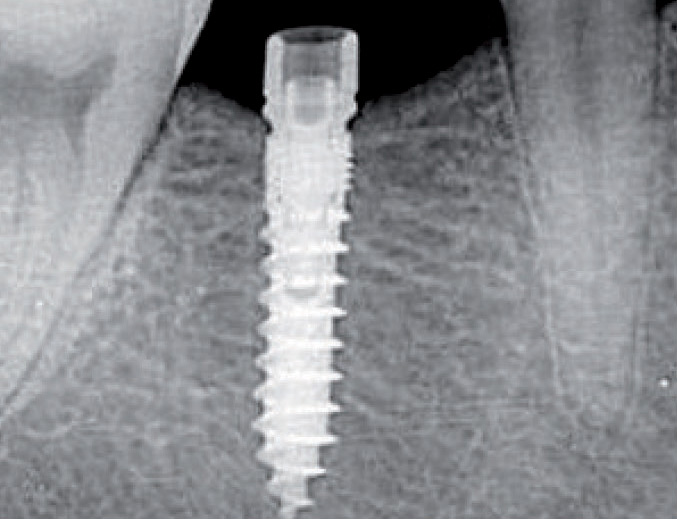

2. Does flapless surgery require a cone beam, planning software, and a 3D-drilling template?
A pre-operative cone beam is not necessary. It is not recommended that you should plan the length and diameter of an implant by means of a cone beam. Planning with a cone beam can lead to deviations of several millimeters between the planned and actually placed implant, leading to an incorrect evaluation. In addition, exposure to radiation is higher with a cone beam than with an OPTG or a dental film. In my view a cone beam just for making drilling templates is contraindicated. You only need drilling templates with other implant systems when drilling at 400 rpm or more with twist drills in the spongy bone. In addition, serious studies have clearly stated that a drilling template does not ensure a reliable treatment. In fact it is the opposite: you don’t really see your surgical site and you fully rely on the lab which has manufactured this template. For MIMI®-Flapless you do not need planning software because the fact is: “the diameter of the implant that is to be placed is not determined by the width of the alveolar ridge, but instead by the primary stability of the intra-operatively inserted condensers!” Scientific studies have already confirmed this!

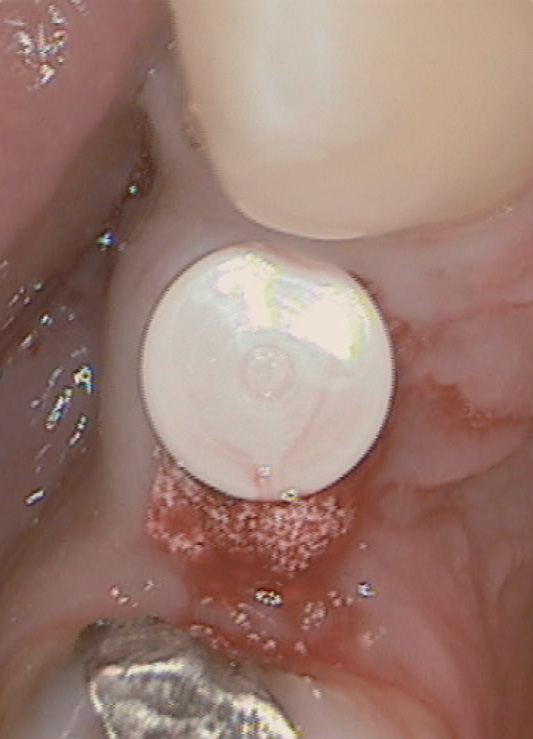
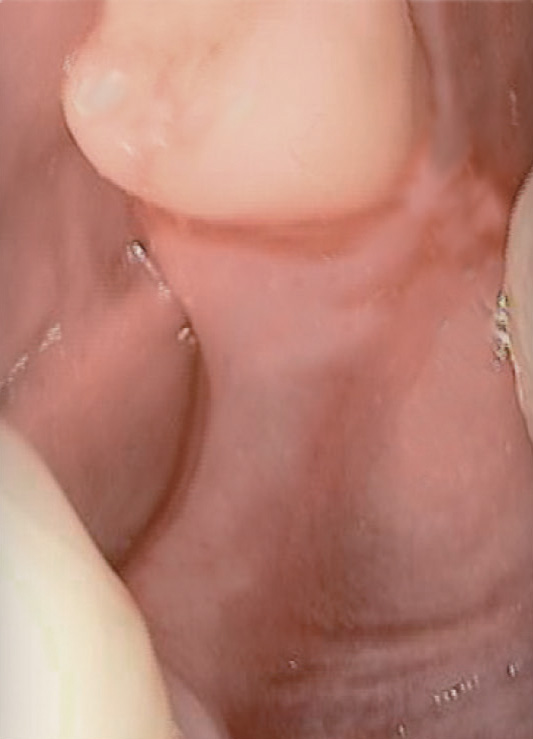
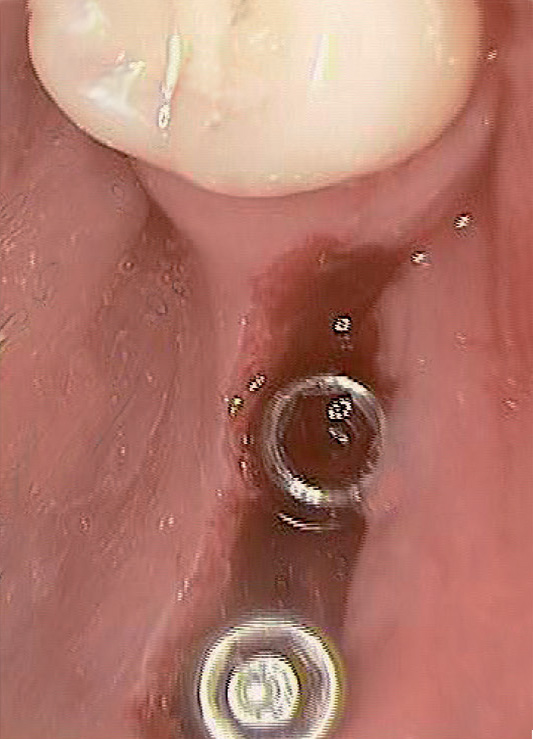
3. Can you often avoid augmentations if you perform implantation using MIMI®-Flapless?
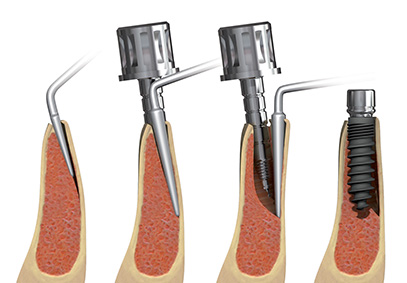
4. How long should you wait after a dental extraction until the bone is regenerated and you can place an implant?
From a medical-physiological and a patient-psychological point of view: 2–5 minutes after dental extraction!
The best moment for an implantation is right after the dental extraction! That is why the phrase “I don’t have many potential patients for implants” is not up-to-date anymore! To us as MIMI®-users science has proved to be a success, based on studies:
“Immediate implantation is the method of choice to preserve the structure of hard and soft tissues!” Usually, patients are happy when they can choose the therapy themselves.
From a forensic point of view, patients should have enough time to make their decision, but you should at least offer them this alternative solution. Immediate implantation (dental extraction and implantation in just one session) is not only a big opportunity for our clinics, but it has also proven to be extremely beneficial for our patients too:
Just one local anesthesia and only one surgery session! From a psychological point of view, it is very important for the patient to get rid of the “sick tooth” and immediately get a “healthy root”!
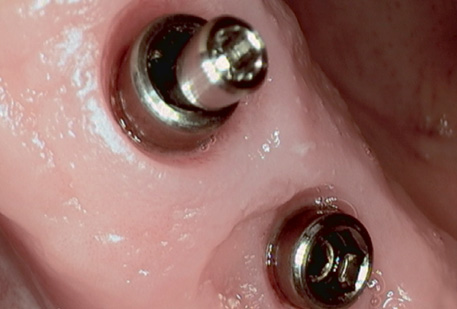
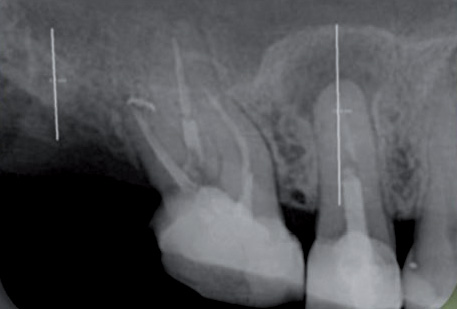
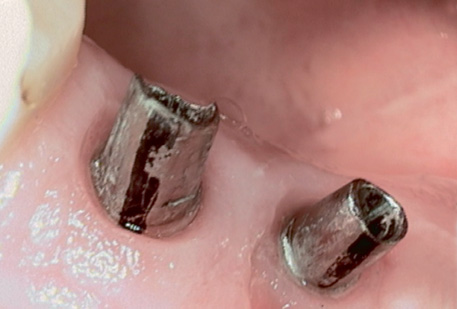
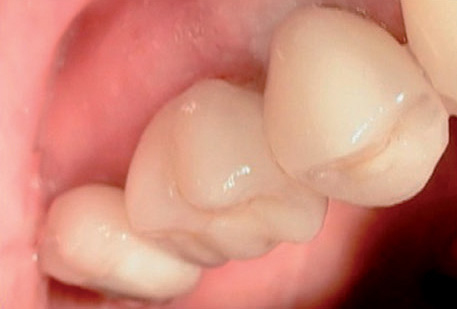
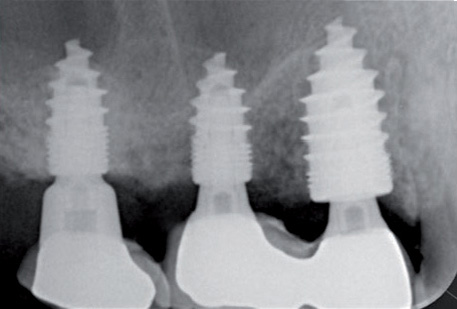
5. I have never placed an implant before, but I would really like to start with MIMI®-Flapless implantation. What can I do?
For acquiring skills in the “MIMI” minimally invasive insertion protocol, we offer personalized training in your own Clinic, also Implantology continual courses based at the “Future Dental Academy” in Flonheim, Germany, as well as the CITC-Curriculum of the VIP-ZM, which is an intensive Implantology ongoing educational training course. This practical curriculum includes 2 theory blocks and at least 5 implantations that you can perform on your patient under supervision of an experienced implantologist in your dental practice.
For further information please send us an Email (info@intra-systems.com) or call our Office (+44 (0) 1202 080077) , we will be happy to help.
6. I am afraid to perforate the bone because I don’t see it directly! Is MIMI®-Flapless a "blind" procedure?
No, it is not a “blind” procedure because we palpate and check the bone cavity in all dimensions (“BCC”: Bone Cavity Check) with a thin and flexible periodontal probe after each step – and like during an endodontic treatment you feel the bone “with your fingers”: when you prepare a canal during an endodontic treatment, you don’t really see the tooth roots either, but you feel them “digitally” (with your fingers).
It is important to say that our drilling protocol into spongy bone is performed at a rotation speed of about 70 rpm (instead of 400 to 1,500 rpm with cylindrical drills, usually done with the conventional method)! So to emphasize again as with an endodontic treatment, it is also done very slowly. With our system we consider the conical triangular drills, condensers, and the implant itself as “osteotomes” that allow bone to be condensed gently and controlled. In addition, the conical triangular drills are used with low speed, always “navigated” within the spongy bone, with the help of the buccal and lingual cortical bone.

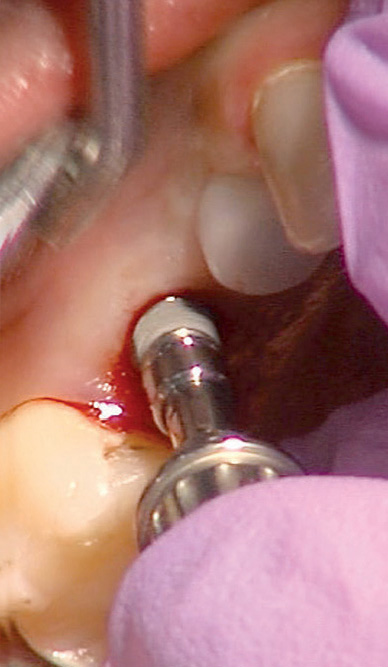
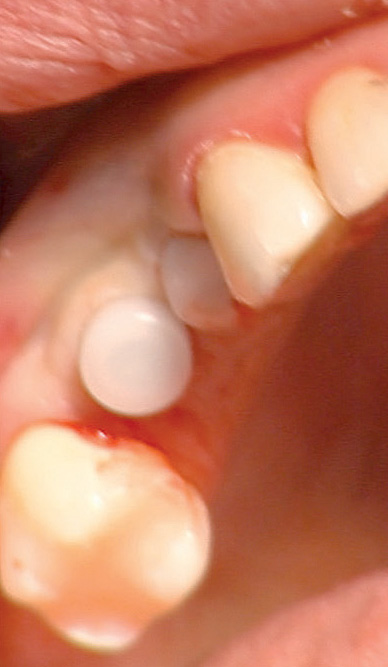
7. When performing a delayed implantation, isn’t there a danger of epithelial cells being transported into the bone cavity because of the transgingival drilling and implantation, causing connective tissue healing around the implant?
This theory belongs to the “stone age” of Implantology and has not proved to be true. If epithelial cells are not nourished, they will die quickly. In fact, osteosynthesis and bone remodeling are not adversely affected. In addition, conical triangular drills have the positive feature to limit the penetration of elements into the bone cavity.
A connective tissue encapsulation around the implants is in fact caused by lateral micro- and macro-movements of the implants during the 2nd–8th week after implantation, which can lead to an implant loss.
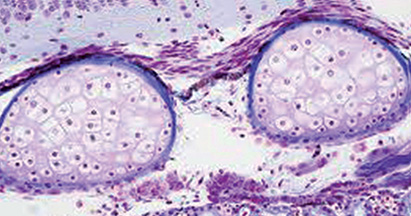
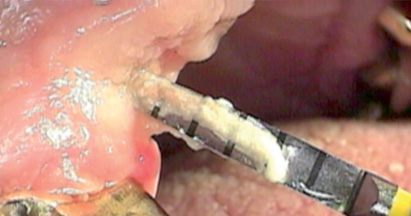
8. Which equipment is necessary in the dental clinic to start with MIMI®-Flapless implantation and Champions® implants?
Actually all you need is a green handpiece that you can control the speed of whilst connected to your treatment unit. An OPG might also be useful and if you do not have access to one a colleague of yours or an orthodontist near you might be able to perform an OPG for your planning, you do not need a surgical micromotor with water cooling, piezo tool or a cone beam.
9. For how long and by how many dentists has MIMI®-Flapless been used?
MIMI®-FLAPLESS HAS BEEN USED IN GERMANY FOR ABOUT 25 YEARS!
Since 1994, I have specialized in Implant Dentistry and prosthodontic work. So far I have inserted more than 22,000 implants using MIMI®-Flapless. From 2001 to 2006, I developed the Champions® implant system, inspired by different dental implant systems I knew. Champions® implants have been successfully placed in more than 4,000 clinics/dental practices in about 40 countries.
“NICHTS IST BESTÄNDIGER ALS DER WANDEL!” (NOTHING IS MORE CONSTANT THAN CHANGE)
Where some people stop, others continue! I am sure that the MIMI®-Flapless procedure will become the “gold standard” in Implantology! For the well-being of our patients.
10. Do the statutory, health insurances and allowances cover a MIMI®-Flapless treatment?
In fact, the MIMI®-Flapless treatment is less costly than the conventional treatment, for the patient and the dentist. It is the result that counts!
You can charge insurance for the costs of the MIMI®-Flapless implantation in the same way as for the costs of a conventional implantation with flap. You can also charge the surgery costs for bone spreading and an indirect sinus lift (valid for Germany – other countries may vary).
Note: rarely, some private health insurances confuse the MIMI® method with the “Mini” implants (with a small diameter). However, this has already been explained to them.
Since MIMI®-Flapless with Champions® is cost-efficient, more patients can now afford an implant treatment, and almost twice as many cases are treated per year.
